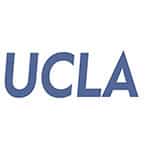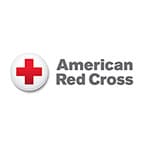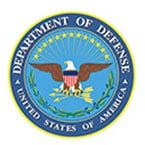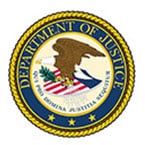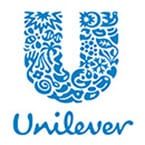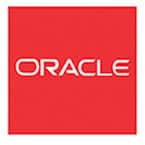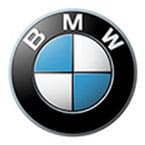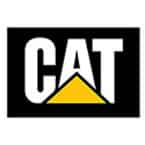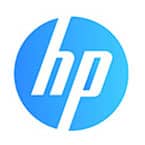Contact us by email at interpreting@alsglobal.net or via phone at 1-800-951-5020 for a free estimate on our ASL and CART services.
Trusted CART & ASL Services in Portsmouth, VA
American Language Services has been helping businesses and other entities reach the deaf and hard of hearing community for more than 35 years. While in-person interpreting, at one time, was the only option, recent technological advances opened the door to other options. Since we offer full-service Video Remote Interpreting (VRI), this article will be comparing Virtual American Sign Language (ASL) interpreting with Communication Access Real-Time Translation (AKA- Closed Captioning & Real Time Subtitling) known as CART.
Please note that according to the American Disability Act (ADA) that deaf and hard of hearing community have the legal right to receive full access through the use of ASL and or CART services. The ADA prohibits discrimination against individuals with disabilities and providing ASL interpreters for deaf individuals complies with federal law and promotes equal accessibility.
Some interesting Facts About the City of Portsmouth
- Portsmouth is an independent city located in the U.S. commonwealth of Virginia. As of the 2010 census, the population was 95,535. It is part of the Hampton Roads metropolitan area.
- The Norfolk Naval Shipyard, often called the Norfolk Navy Yard, is a historic and active U.S. Navy facility that is actually located in Portsmouth rather than Norfolk; the original name “Gosport” was changed to “Norfolk” to reflect its location in Norfolk County, VA. The shipyard upgrades, remodels, and repairs ships of the US Navy and is one of the few facilities in the world with the capability to dry dock an aircraft carrier.
- Directly opposite Norfolk, the city of Portsmouth also has miles of waterfront land on the Elizabeth River as part of the harbor of Hampton Roads. There is a ferry boat that takes riders back and forth across the water between Downtown Norfolk and Olde Towne Portsmouth.
- Portsmouth is located on the western side of the Elizabeth River directly across from the City of Norfolk. In 1620, the future site of Portsmouth was recognized as suitable shipbuilding location by John Wood, a shipbuilder, who petitioned King James I of England for a land grant. The surrounding area was soon settled as a plantation community.
- Portsmouth was founded by Colonel William Crawford, a member of the Virginia House of Burgesses. It was established as a town in 1752 by an act of the Virginia General Assembly and was named for Portsmouth, England.
- In 1767, Andrew Sprowle, a shipbuilder, founded the Gosport Shipyard adjacent to Portsmouth. The Gosport Shipyard at Portsmouth was owned by the Commonwealth of Virginia after the American Revolutionary War and was sold to the new United States federal government.
- In 1855, the Portsmouth and Norfolk area suffered an epidemic of yellow fever which killed 1 of every three citizens. It became an independent city from Norfolk County in 1858.
- During the American Civil War, in 1861, Virginia joined the Confederate States of America. Fearing that the Confederacy would take control of the shipyard at Portsmouth, the shipyard commander ordered the burning of the shipyard. The Confederate forces did in fact take over the shipyard, and did so without armed conflict through an elaborate ruse orchestrated by civilian railroad builder William Mahone (soon to become a famous Confederate officer). The Union forces withdrew to Fort Monroe across Hampton Roads, which was the only land in the area which remained under Union control.
- In early 1862, the Confederate ironclad warship CSS Virginia was rebuilt using the burned-out hulk of USS Merrimack. Virginia engaged the Union ironclad USS Monitor in the famous Battle of Hampton Roads during the Union blockade of Hampton Roads. The Confederates burned the shipyard again when they left in May 1862.
- Following the recapture of Norfolk and Portsmouth by the Union forces, the name of the shipyard was changed to Norfolk Naval Shipyard. The name of the shipyard was derived from its location in Norfolk County. The Norfolk Naval Shipyard today is located entirely within the city limits of Portsmouth, Virginia. The Norfolk Naval Shipyard name has been retained to minimize any confusion with the Portsmouth Naval Shipyard, which itself is actually located in Kittery, Maine, across the Piscataqua River from Portsmouth, New Hampshire.
- Portsmouth was the county seat of Norfolk County until 1963 when the new city of Chesapeake was formed in a political consolidation with the city of South Norfolk. Portsmouth’s other county neighbor, the former Nansemond County, also consolidated with a smaller city, forming the new city of Suffolk in 1974.
- One of the older cities of Hampton Roads, in the early 21st century, Portsmouth was undergoing moderate urban renewal in the downtown.
- The APM “MAERSK” marine terminal for container ships opened in 2007 in the West Norfolk section.
- Built in 1846, the Portsmouth Courthouse is a historic landmark in the center of the Olde Towne Historic District.
- The Olde Towne Historic District features one of the largest collections of historically significant homes between Alexandria, Virginia and Charleston, South Carolina. The Emanuel African Methodist Episcopal Church was built by slaves and free men and is the second-oldest building in Portsmouth and the city’s oldest black church.
- The city contains a number of other historic buildings, as well, including the Pass House, which was built in 1841 by Judge James Murdaugh and occupied by Union troops from 1862 to 1865. Federal forces required Portsmouth residents to obtain a written pass to travel across the Elizabeth River and beyond. These passes were issued from the English basement and thus the name “Pass House” was derived.
- Formerly the Naval Hospital Portsmouth, the Naval Medical Center Portsmouth is a United States Navy medical center adjacent to the Olde Towne Historic District and Park View Historic District. Founded in 1827, it is the oldest continuously running hospital in the Navy medical system with the motto “First and Finest.”
- Located at 1 High Street in the Olde Towne Historic District, the Seaboard Coastline Building is a historic train station and former headquarters of the Seaboard Air Line railroad company.
- Four-story 1825 English basement home furnished entirely with original family belongings. It is evident from the furnishings that the Hill family were avid collectors and lived graciously over a period of 150 years. The house remains in its original condition, with limited renovation through the years.
- Established in 1832, Cedar Grove Cemetery is the oldest city-owned cemetery in Portsmouth. Listed on the National Register of Historic Places listings in Portsmouth, Virginia, the cemetery is noted for its funerary art and the civic, business, maritime, religious and military leaders who are buried there. Historical markers placed throughout the cemetery allow for self-guided tours. The cemetery is located between Effingham Street and Fort Lane in Olde Towne Portsmouth. Entrance is through the south gate to the cemetery, located on London Boulevard.
- According to the United States Census Bureau, the city has a total area of 47 square miles (120 km2), of which 34 square miles (88 km2) is land and 13 square miles (34 km2) (28.0%) is water.
- Portsmouth’s mild humid subtropical climate means outdoor activities can be enjoyed year round. The weather in Portsmouth is temperate and seasonal. Summers are hot and humid with warm evenings. The mean annual temperature is 65 °F (18 °C), with an average annual snowfall of 3 inches and an average annual rainfall of 47 inches. No measurable snow fell in 1999. The wettest seasons are the spring and summer, although rainfall is fairly constant all year round. The highest recorded temperature was 105.0 °F in 1980. The lowest recorded temperature was -3.0 °F on January 21, 1985.
- Additionally, the geographic location of the city, with respect to the principal storm tracks, is especially favorable, as it is south of the average path of storms originating in the higher latitudes, and north of the usual tracks of hurricanes and other major tropical storms. Snow falls rarely, averaging 3 inches (76 mm) per season.
As of the census of 2010, there were 95,535 people, 38,170 households, and 25,497 families residing in the city. The population density was 3,032.7 people per square mile (1,170.9/km²). There were 41,605 housing units at an average density of 1,254.7 per square mile (484.4/km²). The racial makeup of the city was 53.3% African American, 41.6% White, 0.4% Native American, 1.1% Asian, 0.1% Pacific Islander, 1.0% from other races, and 2.6% from two or more races. Hispanic or Latino of any race were 3.1% of the population.
- There were 38,170 households out of which 30.6% had children under the age of 18 living with them, 41.1% were married couples living together, 10.9% have a female household with no husband present and 33.2% were non-families. 27.5% of all households were made up of individuals and 10.8% had someone living alone who was 65 years of age or older. The average household size was 2.51 and the average family size was 3.05.
- In the city, the population was spread out with 25.7% under the age of 18, 11.1% from 18 to 24, 29.1% from 25 to 44, 20.3% from 45 to 64, and 13.8% who were 65 years of age or older. The median age was 34 years. For every 100 females there were 93.5 males. For every 100 females age 18 and over, there were 90.6 males.
- The median income for a household in the city was $46,340, and the median income for a family was $53,769. Males had a median income of $39,871 versus $33,140 for females. The per capita income for the city was $23,108. About 13.5% of families and 16.7% of the population were below the poverty line, including 27.1% of those under age 18 and 10.8% of those age 65 or over.
- Portsmouth has a long history as a port town and city. The Olde Towne Business and Historical District is located in the downtown area, where a combination of preservation and redevelopment has been underway. An example is Hawthorn Hotel & Suites at The Governor Dinwiddie Hotel, which was renovated and reopened in 2005 after being closed for more than 10 years. It has been recognized by Historic Hotels of America, a program of the National Trust for Historical Preservation that identifies hotels that have maintained their historical integrity, architecture and ambiance and provides resources for their preservation. (Dinwiddie County near Petersburg was also named for him).
- Other points of interest include the Portsmouth City Park, featuring the 2 ft (610 mm) narrow gauge Portsmouth City Railroad with an operating Chance Rides C.P. Huntington locomotive named Pokey Smokey II. The original Pokey Smokey locomotive was built by Crown Metal Products and ran at the park for many years before being sold at auction. It now runs on the Mideast Railroad in Ederville in Carthage, North Carolina.
Reference Sources: Kiddle Encyclopedia
Portsmouth ASL & CART Language Interpreters
American Language Services is known for our high-quality, In-person and Virtual interpreters, as well as the outstanding client services we provide. We work in 200+ languages including Legal and Medical Certified and Qualified. ASL and CART are the fastest growing languages in Portsmouth today a language interpreter can be a very underestimated professional in the world today. There are over 100 languages spoken in the Portsmouth Metro area alone. Many of us know one language, and we specialize in one field of study. Our Portsmouth Interpreters are fluent in English and at least one other language, and they are knowledgeable in a wide range of specialized fields including legal, medical, technical, manufacturing, and engineering.
A brief history of ASL Interpreting in Portsmouth
Most people know that ASL stands for American Sign Language. But not everyone knows that it is a distinct language—not simply an offshoot of American English. Though its beginnings are murky, many believe that ASL originated from a merger of French Sign Language (SLF) and local U.S. sign languages. While ASL and SLF are distinct languages, there are still some similarities between their signs.
What actually is ASL? ASL a complete, natural language that has the same linguistic properties as spoken languages with grammar however that differs from English. ASL is expressed by movements of the hands and face. ASL is a language completely separate and distinct from English. It contains all the fundamental features of language, with its own rules for pronunciation, word formation, and word order. Because of the physical nature of ASL, a two-person team of ASL interpreters is required for assignments longer than 1 hour in duration.
The National Center for Health Statistics claims that 28 million Americans have some degree of hearing loss, though only between two and eight percent of them are natural ASL speakers. Helping these select individuals translate the audible into the understandable is the job of an ASL interpreter. If you have ever been to a play, a concert or watched a government briefing, you have probably seen an ASL interpreter signing just out of view. An interesting side note is that Statista estimates that there are currently around 60,000 active ASL interpreters in the USA.
The Benefits of ASL Interpreting in Portsmouth
When it comes to communicating with hard-of-hearing or deaf audiences, there are a few reasons you might want to opt for a Portsmouth ASL interpreter over CART services. These include:
- A More Personal Connection: A real person has several advantages over a computer screen. First, human interpreters have an easier time conveying emotion. Second, they are better equipped to point out speakers and assist with pronunciation issues. Finally, an interpreter gives a deaf or hard of hearing person a chance to bond with another person.
- Enhanced Speed: Skilled interpreters can hold pace with even the fastest speakers. Lack of delay makes it easier for deaf and hard of hearing individuals to keep up with the conversation.
- Cost Effective: While costs range by the type of ASL you need (Legal, medical, business, etc.) and when the assignment is scheduled, the cost off ASL, across the board, is less money than CART.
What Is CART?
While the majority of people know what American Sign Language is, the same cannot be said for Communication Access Real-Time Translation. Often referred to as CART, this communication method for the deaf and hard of hearing is best described as subtitling for live discussions. Unlike ASL, which relies on a professional interpreter, CART services are provided by a well-trained stenographer or transcriptionist. They transcribe anything said and then broadcast the resulting text to a phone, computer, or TV screen.
CART is often seen as a cost-effective and efficient way to ensure everybody can follow along. While often used to help deaf students in the classroom, CART captioning benefits anyone that can read. Much like ASL interpreting, it can be done both onsite with a physical transcriptionist or remotely with an offsite one.
Why You Should Consider CART for the Portsmouth Market
Communication Access Real-Time Translation is growing in popularity due to the following characteristics:
- It Serves a Wider Array of Deaf People: If you do a little math, you will realize that 65 percent of hard-of-hearing people in the USA do not speak ASL fluently. CART makes it so these people can join in on the conversation as well.
- CART Makes It Scalable: While people in the front rows can easily make out what an interpreter is signing, it gets harder as the distance increases. Since captions can be beamed to multiple screens simultaneously, they do not have to factor speaker distance into the equation.
- The Text Provides a Written Record: Having a transcript of everything your professor said would be a godsend come finals. Having a record of a meeting can also provide clarity to all those involved as well. The physical nature of CART recording makes that possible. This ability is one reason so many college students opt for CART over traditional ASL interpreting.
About American Language Services
Founded in 1985, American Language Services was there to help pioneer the rise in remote ASL interpreting options. Our dedication to quality and client satisfaction in interpreting allowed us to shift from a one-woman agency into one of the most successful language agencies in the world. Our language experts provide ASL & CART interpreting services to people all around the world. Because of our 24/7 availability, you’ll never have to worry about us not being available, on off times, for an assignment.
AML-Global has some of the most impressive linguistic talents in the world. These highly skilled language professionals are recruited, screened, and tested to ensure high-quality work.
Contact us by email at interpreting@alsglobal.net or via phone at 1-800-951-5020 for a free estimate on our ASL and CART services.




